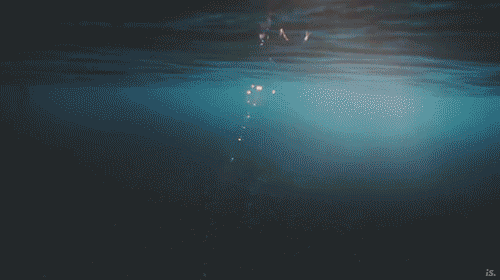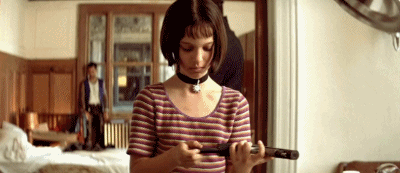Text
Fragments from “The Pursuit of Art” by Martin Gayford
Chance and Necessity 17: Gerhard Richter: Chance does it better than I can
‘Art should be serious, not a joke. I don’t like to laugh about art.’ But, Richter added happily, ‘I am ridiculously old fashioned.’ And there I suspected he was joking, just a little; after all, he was one of the most radical painters alive, a superstar of contemporary art, at that time regularly heading polls of the most admired artist alive.
This in a way was the story of his life and career: continuing to work in a medium - paint - that was widely believed to have died long ago.
‘I believe in eating too. What can we do? We have to eat; we have to paint; we have to live. Of course not everybody paints, there are different ways to survive. But it’s my best option. I didn’t have much choice when I was young.’

Marianne was later murdered in a Nazi programme to exterminate the mentally ill.
‘I work on, say, six works at the same time. They learn from each other. One is better here, worse there, so I change it. Finishing is the most difficult thing.’
‘Several hours of painting in the studio in the morning and two more in the afternoon. Every day is not possible; you don’t have the right mood every day. But that’s the ideal.’
He named after John Cage, the avant-garde American composer who had once announced, in his ‘Lecture on Nothing’, ‘I have nothing to say and I’m saying it.’ Perhaps that was true of Richter too.
‘Chance does it better that I can,’‘but I have to prepare the conditions to allow randomness to do its work.’
‘Randomness is an important theme to me because it’s the same in life,’ ‘Chance determines out lives in very important ways. If he hadn’t met her, what would have happened to them both?’
‘Of course, the more energetic people are the ones who leave - that’s the simple explanation, but it’s not that simple. We saw modern art in magazines, but we were hungry to see it. When you have everything, naturally you are not so hungry.’
His painting of his aunt Marianne contained terrible memories, whereas Ema (Nude on a Staircase) (1996), a picture in the Ludwig Museum here in Cologne of Richter’s first wife, nude, walking downstairs, was full of love and sensuality. If Vermeer had ever painted a naked portrait of his wife, it really might have looked a bit like this.
Only many years later did he discover that Ema’s father had been the commandant of the camp where Marianne died.

For this medieval monument the religious faith, Richter had devised a window of 11,500 hand-blown glass panels in seventy-two shades compatible with the existing stained glass. There were made and put together in accordance with a randomizing computer programme.
Cardinal Joachim Meisner, observed that when culture is cut off from God it becomes ‘degenerate’. That really stirred things up because degenerate - in German, ‘entartete’ -was the word used by the Nazis to describe modern art. The Cardinal was angry, Richter told me, because his window is not a Catholic window. Then he wryly repeated Einstein’s remark, ‘God does not play dice.’
Richter’s strained glass looked fabulous: flickering with light, absolutely contemporary, suggestive of some infinitely complex system. You could see why the Cardinal thought it was scandalously irreligious.
as if you were looking at electrons, molecules and photons in action.
Niels Bohr, another great physicist, responded: ‘Don’t tell God what to do!’
Chance and Necessity 18: Robert Rauschenberg: A Turtle in the Elevator
Rauschenberg, it soon emerged, loved cooking, and gave a characteristically oblique account of why he like it: ‘It’s a very special way just to turn your back and still be there.’
‘I left the church’, he explained, ‘because I did not believe that life was to be spent thinking that everything in the world was evil. But the church showed me what I was: that I wasn’t interested in value judgement and condemnation as a life style. I did not believe in goodness coming from fear.’
It is true that early on Rauschenberg produced some paintings even more austere than his teacher’s, canvases painted entirely in white, for example. These he explained as the result of a militant desire to be fair to paints. He hated the way painters picked on ‘innocent colours’ and had forced them to express their emotions. He didn’t think artists should make pigments, or anything else, express their feelings.
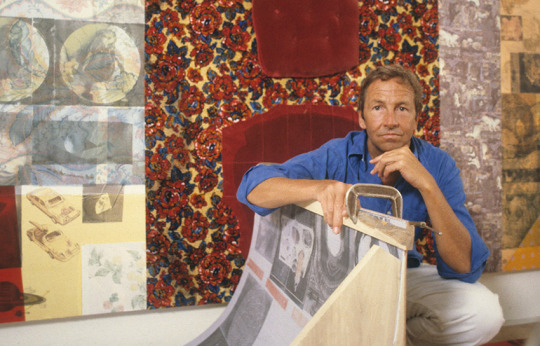
Hughes, with typical verbal gusto, and doubtless conscious of Rauschenberg’s sexual orientation, described Monogram as ‘one of the few great icons of male homosexual love in modern culture: the Satyr in the Sphincter’.
The artist vehemently rejected this account: ‘Most art critics, if you tell them they can’t use any sexual interpretations, they go mute. They don’t know what they are looking at. It’s like candy is sweet; nobody buys bitter candy. It’s a cheap trick. I don’t know how you would get anywhere - if everything had to read through sexuality’. Here was another lesson: how artists see their work may be diametrically different from how it is understood by critics and historians.
He acted on just that principle in 1964 when he won the Grand Prize for Painting a the Venice Biennale. This was a historic victory, which sent shock waves through the European art world, and has often been viewed as marking the moment at which New York definitely took over from Paris as the world capital of culture.
Rauschenberg’s reaction to this triumph was to instruct his studio assistant in New York to destroy 150 of the silk-screens that had been used to make these pictures, so he would not repeat himself.
Those silk-screen pictures that won the prize at the Venice Biennale had for some reason I can’t quite fathom called to me when I was a teenager, so much so that at the age of 18 I had made some collages of my own in homage. They are still there, in a cardboard box in the attic: a possible path in the end I did not follow. Now I regret I didn’t tell Rauschenberg that. On the other hand, I know how he would have reacted: he would have said he didn’t want people to make art like his, but to do something completely different.
Chance and Necessity 19: Desperately Seeking Lorenzo Lotto
he described himself as ‘old, alone, without any stable domestic arrangements and very anxious of mind’.
There is an odd but revealing phrase - ‘in the flesh’ - for seeing art in reality, not reproduction. With Lotto and other Venetian painters it’s almost exact: to appreciate them properly you have to stand in front of them. Only then can you sense the carnal reality of the people they depict, the glistening of their skin, gleam in their eyes, the weight of their bodies, the texture of their clothes. These are physical experiences, because paint is a physical substance: a layer of organic and inorganic chemicals that reflects the light, and consequently changes every time the light alters. There is no substitute for being there.
I hate being lost, so much so that quite often I dream of not being able to find my way. Along with two other nightmares, missing trains and planes, it happens in reality quite frequently: cruelly often when I am searching for church or museum containing a rare work of art.
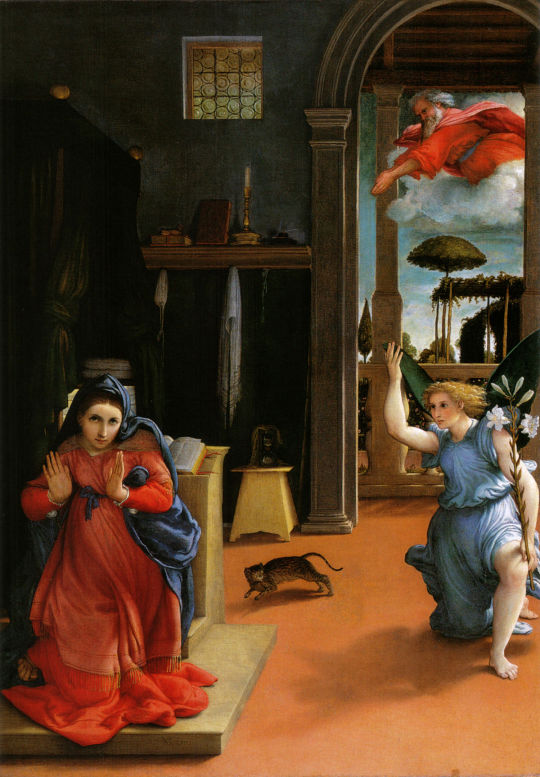
A contemporary painter, Luc Tuymans, once said to the that it was a sign of a good painting that it could not be memorized. That’s true and explains why it always looks different when you see it again. So, on another day, and mood, they would all seem changed.
The pursuit of art is a journey that never stops; the more you see, the more you want to see.
6 notes
·
View notes
Text
Fragments from “The Pursuit of Art” by Martin Gayford
Slow and Fast Looking 14 Henri Cartier-Bresson: It’s the Intensity that Counts
‘I like conversations,’ he announced, ‘I don’t like interviews. To the best questions there is no answer.’
English nanny, from Wolverhampton, recalling that there were many English nannies in France at that time, a generation of girls whose fiancés had been killed in the First World War.
the painter Lucian Freud. A few years before, Cartier-Bresson - then a mere 89 - had climbed the five storeys to Lucian’s top-floor studio in Holland Park, knocked unannounced on the door and taken the painter’s photograph (this was one of the reasons why I knew his claim not to have used his camera for years was an exaggeration).

which turned out to have a great deal to do with instinct. ‘There’s only one thing,’ he began, ‘the glance.’ For this he explained, ‘You have to walk’. Cartier-Bresson loved to walk. At a certain moment, perhaps suddenly, unexpectedly, the subject, his prey, appeared, and in a fraction of a second, he pounced.
‘It’s a joy. It’s an orgasm. You guess and you’re sure. It’s intuition and sensitivity - and you can’t teach those things. Happily you can teach everything except sensitivity and sensuality.’ Can you imagine, he asked me, a Professor of Sensitivity at the Sorbonne?
‘everything in life has its decisive moment’, was the title of a book Cartier-Bresson published in the early 1950s. In the case of photography, the decisive moment was that fraction of a second in which the photographer sees the kaleidoscope of life suddenly take on an expressive form. Then the shutter must click; if you miss it, it’s gone forever. Or, as he said to me, ‘How can you say, “Please could you do that smile again?”
‘Mathematics is poetry.’ he told me, ‘you don’t need to understand it, you just need to feel it and to live accordingly. For me it’s the rhythm of shapes. That is a great joy, like when we make love. It comes to the same thing.’
The geometric structure was, he insisted, ‘sacred’. ‘Otherwise it’s nothing!’ And he raised his fist and forearm in a vigorously obscene gesture.
It is an encounter with another person, often a stranger before the moment you meet. You are allowed by the rules of this game to talk about much deeper, more interesting matters than in usually possible is a social meeting.
But I felt much, much more sorry - in fact, still feel foolish - for not having stayed for that lunch. My mistake lay in sticking to the plan - not following where life led, spontaneously.
Slow and Fast Looking 15 Ellsworth Kelly: Nourishing the Eye
Major painters are like that. When you are immersed in their work the whole world starts to look different.
But he did explain that he had always drawn real objects, plants and flowers particularly, but he wasn’t interested in them as a botanist might be, but in their forms, and also in the forms between the forms: ‘the way they made patterns of positive and negative space’, as he put it. Now, that really does require an artist’s eye. How many non-artists go around fascinated by the beautiful gaps between things?
‘They speak to me, I guess. I don’t really search for them, something just all of a sudden hits me, and it stands out. It’s like, that’s me there. I don’t understand it that much, but I think my eyes does. My eyes are like dictators. I do what my eye tells me, and I’ve nourished my eye.’
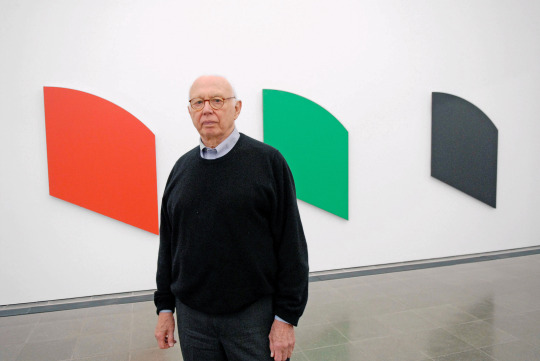
This, perhaps, is true of all creative activities. We can learn to edit and work with it, but don’t really know where the raw material - whether words, sounds, or a sense of form and color - is coming from.
Warhol was onto things like that too, I suppose. Letting chance work and presenting it in such a way that the personality didn’t get between the viewer and the painting. You let the thing itself exist.’
He once said, epigrammatically, how if you turn off your mind and open your eyes, everything becomes abstract.
Slow and Fast Looking 16: Robert Frank: It Changes all the Time
‘Swiss, unobtrusive, nice.’
That Greek philosopher noted that it is impossible to step into the same river twice - since by the time you do the water will have changed and so will you.
During the war Switzerland was an island of safety in Nazi-controlled Europe. But as soon as the was over, Frank wanted to get away into the wider world. He didn’t want the smallness of Switzerland, nor did he want to follow his father into the business.
‘That man was a very big influence on me. He was a wonderful man - very quiet, he couldn’t hear very well, with a lot of knowledge of contemporary art.’
‘I was very free with the camera. I didn’t think of what would be the correct thing to do; i did what I felt good doing. I was like an action painter.’

But content, De Kooning told the critic David Sylvester in a frequently quoted interview, was, as far as he was concerned, a glimpse. ‘A glimpse of something, an encounter, you know, like a flash - it’s very tiny, very tiny, content.’
It struck me that Frank’s own photography could be described in the same way: fleeting glimpses.
Sometimes a glimpse can indeed be sufficient. Seeing - and understanding - can be extremely fast as well as very slow.
The art historian and museum director Kenneth Clark said he could tell a good painting from a bad one while going past it at 30 miles an hour on a bus. He wasn’t much exaggerating. Sometimes you can.
‘I always had my doubts about photography, because it’s made by a machine, then duplicated by a machine. I always wished that I could start with an empty sheet and make something like a painter.’
However, he had a painter’s instinct - the ability to see a potential picture almost at the speed of light.
1 note
·
View note
Text
Fragments from “The Pursuit of Art” by Martin Gayford
Way Out East 11 In Beijing with Gilbert & George
I had accepted a seat in the smoking section. A relatively recent non-smoker, I thought it would not make much difference. The result, however, was the periodically smokers came back to have a cigarette, sitting in the empty seat next to mine - and every one of them felt it would be polite to have a conversation while they did so.
No one seemed sure why this Gilbert & George show had been allowed.
by South Korean artists a while before, was forcibly taken down. G&C’s approach, in contrast, had beed accepted with alacrity - and here we all were.
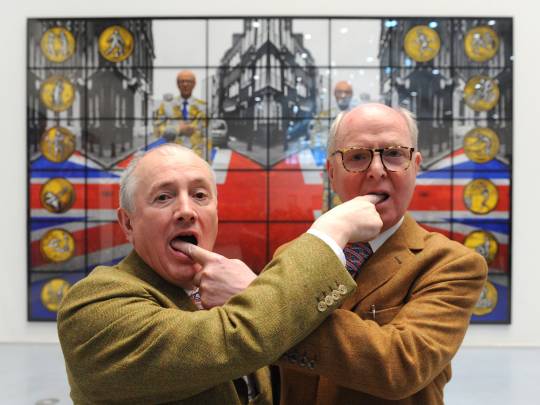
whereby decadent, bourgeois art was expected to be abstract.
‘normal conservative rebels’ - would have baffled most secret policemen.
This show is said to help Peking’s bid for the 2000 Olympics.’
‘What is a Rembrandt? It is himself. All the inner feelings of the artist. Or Van Gogh. It’s just him, a completely maniac person. You see his mad vision and that’s it.
‘I think it’s very good we’re in the picture reminding the viewer that its not a boring artwork, only an aesthetic experience. It’s us saying something to them.’
Gilbert & George started out, proclaimed themselves one artist, and defined their idiom as ‘living sculpture.’
a community high in the Alps close to the border with Austria who speak neither Italian nor German. but a language of their own, Ladin.)
‘You mean the vision. We only believe in that, Even when you see a Michelangelo, it’s just his vision, that’s the important thing. Then you find your form. But the important thing is to have a vision.’
The globalization of the international art world had already, begun, and, like the economic variety, was to gather ever greater pace in the years to come.
Way Out East 12 Naoshima: A Modern Treasure Island
‘The art, the building and the environment should work together to wake up the viewer.’ The phrase he used - ‘wake up’ - recalls the term satori, meaning ‘awakening, comprehending or understanding’, used in Japanese Buddhism.
It was made about 500 years before the modernist architect Mies van der Rohe remarked that less is more.
how oriental Claude Monet really was. After all, he was a collector and lover of Japanese prints, which hung all around his dining room, 6,000 miles away in Giverny.
Monet’s western identity was already blending with the east. The freedom of his paint strokes might seem just a flourish of the brush, but when you step back they become plants, water or reflected sky.
I had a moment of satori. I could see that Monet’s subject was everything - growth, change, light, dark, heavens, earth - and nothing (just passing shadows on few feet of pond), which is very Zen.
Way Out East 13 Travelling in Chinese Mountains
the Sea of Mist from the peaks of Huang Shan, the Yellow Mountain range. In its way, this is a sight as fundamental to Chinese culture as the Pantheon is to the Greek, or the Pyramids to the Egyptian. In a way it is the subject of Chinese art.
There, in the excellent Shanghai Museum, for the first time in my life I saw a large collection of classic Chinese painting.
Anish Kapoor cited them as one of his sources of inspiration; the poet Kathleen Raine suggested that the Chinese masters of the Song Dynasty were perhaps the greatest landscape painters of all.
Chinese thinkers believed - rather before Albert Einstein - that matter and energy were one. Everything was a manifestation of divine energy or qi (pronounced chee). Literally, the word means air, water or breath: a life-force powering the cosmos.
Just as the Innuit are said to have fifty different words for snow, Chinese commentators on art distinguished a whole thesaurus of ink marks.
Such vocabulary, incidentally, is sadly lacking in European languages, which is one reason why it is so hard to discuss painting with precision.
Xunzi, born about 310 BC, there was a hierarchy of qi. Such elements as fire and water had qi, but not life. Plants had qi and life, but not understanding; animals and birds have all three, but not ‘propriety’, or a moral sense of how to behave and shape the world. Only human beings have that.
The Chinese phrase for pilgrimage means literally ‘paying one’s respect to mountains.’
But these are not warring forces like good and evil in the Middle Eastern Manichean - and Christian - view of the world, but complementary forces. The sinologist Rolf Stein translated them as ‘shady side (of a mountain)’ and ‘sunny side (of a mountain)’. They were necessary the each other.
This was, he argued, quite distinct from the European, post-Renaissance system of fixed-point perspective, which automatically also fixed the spectator in a certain spot in relation to the world.
The viewer navigated, as we do in the real world, through ever-shifting surroundings using our senses and our intuition.
the point was why this kind of sight meant so much to the Chinese. To them, it seemed to be a direct experience of the universe at work. The landscape came and went just as all things do: people, dynasties, empires, event mountains. Only the swirling energy is immortal. As a view of the cosmos, it is astonishingly up to date.
0 notes
Text
Fragments from “The Pursuit of Art” by Martin Gayford
Art and Landscape 08 Roni Horn: Changeable Weather in Iceland
All the ways we talk about the rain and the wind, Horn had explained, we also use to talk about ourselves. She was publishing a book to accompany the Library of Water, the title of which neatly made this point: Weather Reports You.
‘I definitely am not the same person talking to you as to the next person. There is a difference, and it’s caused by how you affect me.’
He answered, modestly ‘I’m the president of Iceland.’
‘Archiving’ this most universal and ungraspable of elements, she freely admitted, was a bizarre act.

‘In different places you are not the same person. You engage differently in different places, and different places engage you differently.’
Each sample of water came from a particular Icelandic glacier.
With each passing year they were diminished. They were melting away. Iceland, placed between the warm airflows of the Gulf Stream and cold blasts from the North Pole, is a country whose whole history has beed dominated by climate and ecology.
Constable said that the sky was the chief organ of sentiment in a painting.
‘Identify’, she had pointed out, tends to be thought of as ‘a discrete, stable, nameable entity’; but she found it was more like water or Iceland: words didn’t quite capture its fluid nature. That, obviously, was true. We all change, all the time. And a slight modification in our environment - a drop in temperature, say, rainfall or air pressure - and planet earth and our lives are in deep trouble.
Art and Landscape 09 Sublime Minimalism in Marfa, Texas

Art and Landscape 10 Descent into Anselm Kiefer’s Underworld
He is, of course, widely regarded as one of the most important living artists.
The emptiness gives him such scope to fill it up.
I suppose if the public are ever allowed to visit this astonishing place - as Kiefer plans - they’ll ave to observe these towers from a safe distance.

Biographically speaking, you could argue that ruins are Kiefer’s natural habitat: they were the background to his childhood.
A child accepts everything; he doesn’t ask if it’s good or bad.’
‘how can anyone be an artist in the tradition of German art and culture after Auschwitz?’
Inside, were sculptures made from Kiefer’s signature material: lead.
lead boats would sink, lead aeroplanes wouldn’t fly, lead pages are hard to turn. So al three have the poignancy of impossible, useless objects. But there is much more to his use of material than that.
about alchemy. Lead, of course, was the material from which alchemists hoped to make gold. ‘But at the beginning,’ Kiefer explains, ‘it wasn’t just a materialistic idea, it was a spiritual one: to transform matter into a higher spiritual state.’ I suggested that in a way all art is alchemy: transforming one substance - paint and canvas for example - into something else entirely.
‘A photograph’, he’d insisted when we talked, ‘is only the instant the shutter was open, while a painting doesn’t only show a moment: it presents a history. It’s a living thing. It changes, it has depth.’
‘I like to hide my colors, if you go close to one of my paintings, you see all the reds, violets and greens. But I like them to be hidden under the grey, and I prefer misty landscape because it’s more enigmatic, more veiled.’
he remarked that Van Gogh, another artist who moves to the south of France and was obsessed with sunflowers, did all his greatest work in the last two and a half years of his life. ‘The achievement is enormous. So there’s still hope for me!’ He laughed uproariously.
‘In the end nothing goes with anything. It’s your taste that puts things together.’ I think that’s absolutely right. In a sense, every private selection of valued items - even a musée imaginaire is a self-portrait.
0 notes
Text
Fragments from “The Pursuit of Art” by Martin Gayford
Predecessors, Rivals, Successors 04 Cro-Magnon Day (and Nights)
Years before, musing on the difference between looking at a photograph of a painting and the thing itself, the artist Jenny Saville made this point to me: ‘When you are in front of a painting, you’re in the place where whoever made that work was.’
In the past few years, it has been suggested that most of the artists were women - the silhouettes of hands to be found in many caves seem to be largely female ones - which is plausible, but, like every other theory about prehistoric art, subject to scholarly argument.
It made more sense of what living painters had often told me: that they were doing just what prehistoric people had done. David Hockney mused that one of his ancestors must have been a cave artist. It was a favorite line of Gary Hume’s too: ‘I’m a caveman still, in my cave, painting that world out there.’ And Jenny Saville pointed out that painting had scarcely altered in 30,000 years. ‘It’s just pigment and oil, a human being and mark-making tool.’
Predecessors, Rivals, Successors 05 Jenny Saville: The Moment when a Wave Breaks
The grandeur of the bodies, together with their complete lack of eroticism, was faintly reminiscent of prehistoric sculptures such as the Venus of Willendorf or the Venus of Dolní Vestonice.
‘The feeling of being an artist and a model interested me, because in history as a female your position was a model, largely. Women have been looked at, rather than being the people who look. As an artist, your role is to look. So I was combining those two things.
to bring the viewer closer. ‘It’s the effect of intimacy I want.
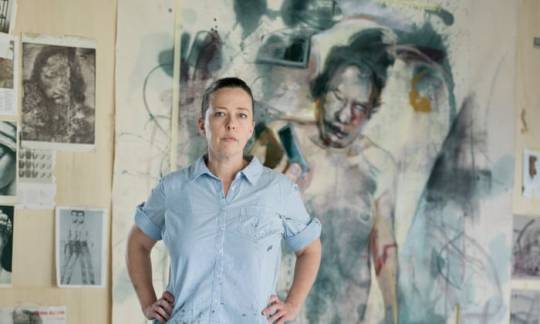
A film, for instance can be shown on a screen of any size. In the same way, a photograph does not necessarily have a particular dimension.
In a picture size matters: a large area of a colour has a different effect from a small one. That’s because, if you are looking at the original, its impact is physiological. In the same way, standing next to a big tree feels quite unlike being next to a sapling.
But, she told me, ‘now I think that is its strength. You have to make a physical effort to be there yourself to see it. Your body has to stand in front of it. That’s its power.
‘flesh was the reason why oil painting was invented’.
Predecessors, Rivals, Successors 06 The Sistine Chapel: Judgement and Revelations
This itself could seem a small, pedantic point. But everything affects how a picture looks. An alteration in the light makes a difference, so does a different position, or the juxtaposition with other pictures. Just moving the works around in a gallery or exhibition can bring them to life or alter the impression they make.
Doubtless, like virtually all artists, he would have hated being labelled, indignantly rejecting the idea that he was part of something called ‘the Renaissance’. He respected his great predecessors, Donatello for example, but tended to have acrimonious relations with living rivals.
That’s how art works, through an unending process of imitation, rejection, response, quotation, and even, as Lucian Freud pointed out, jokes.
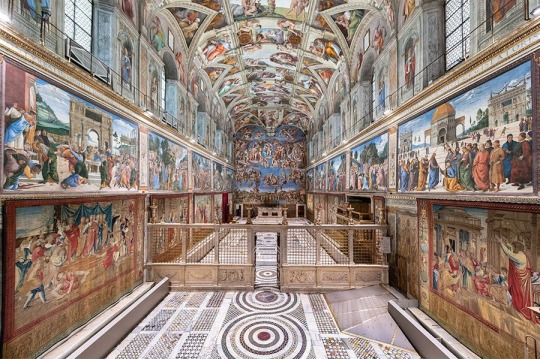
In other words, Raphael was an inspired assimilator and homogenizer of other people’s styles - ‘a brilliant imitator’ Condivi calls him - not a true originator.
He talked of him, according to Michelangelo’s friend Sebastiano del Piombo, ‘almost with tears in his eyes’. But he also insisted, ‘he is terrible, one can do nothing with him’. So when the task of designing the tapestries was handed out in 1515, it went to Raphael. For Michelangelo, it must have been a humiliating blow.
There is a limit to the paragone you can digest on a single day.
Predecessors, Rivals, Successors 07 Jenny Holzer and Leonardo’s Lady
(like the lake at Blenheim). ‘I suffer from vertigo, so maybe I like to share it.’ Sometimes, she added, ‘the text might be projected on a river and the water will do plenty to it - then when a duck or a rat swims through, perfect! A momentarily interrupted word, courtesy of a rat.’
one she shared with two otherwise dissimilar artists, David Hockney and Tracey Emin - that charms journalists: almost everything she said was quotable.
At the time I was working on the series for the Daily Telegraph in which I asked living artists to choose and talk about a work by someone else.
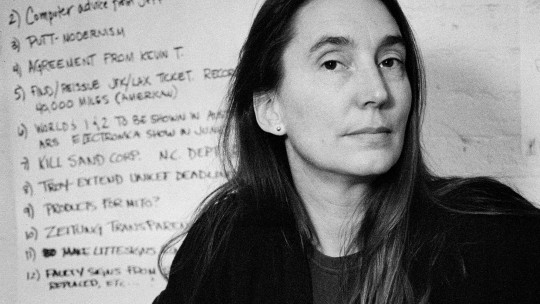
In other words, it was the kind of misunderstanding that brings about deeper understanding.
Does Lucian Freud’s picture of me, Man with a Blue Scarf (2004), for instance, reveal more about him - or about me?
‘the painter’s mind should be like a mirror, which transforms itself into the color of the thing that it has as its object...’, meaning by ‘color’ its form and quality.
So, like Leonardo himself, she was a servant, an ornament of the Duke’s court, a possession. But also like the great artist, she occupied her position because of remarkable personal qualities.
The ermine stood for Ludovico himself, because he had been awarded the Order of the Ermine by the King of Naples. And apparently Cecilia did control him, or at least he was undiplomatically reluctant to give her up for his wife (the daughter of the Duke of Ferrara) in 1491. In addition, the weasel - galé in classical Greek - was a punning reference to her own surname, Gallerani. So she is both keeping the Duke ‘captive and happy’, and has herself in hand, the essence of poise.

0 notes
Text
Fragments from “The Pursuit of Art” by Martin Gayford
Being There 01 A Long Drive to Infinity: Brancusi’s Endless Column
This is a sculpture of infinity. It is thus a highly paradoxical thing: a solid three-dimensional representation of time. That is one reason why, like a lot of good art, it is hard to photograph. The result is a picture of a long, thin object sticking up in the air.
Originally, the column and the other Brancusi works at Targu Jiu were commissioned by the Women’s League of Gorj - the surrounding region - to honor the fallen of the First World War.
In reality, the sculpture had developed in Brancusi’s mind over many years: it was something he was driven to make. He carved his first column from an oak tree in 1918; it stood over 20-feet high in the garden of the American photographer Edward Steichen.

‘The individual beads are also just the right height and shape so you don’t read the column as narrowing towards the top, which you would expect to.’ ‘So’, King had gone on, ‘it remains an abstract line in space, almost a shaft of light, with a strange anti-perspective, and anti-mass.’
Actually, in a way, when you are next to it, you understand it even less, while simultaneously experiencing it more strongly.
Under the postwar Communist regime, the Column was ordered to be demolished, as an example of ‘bourgeois decadence.’
Brancusi carefully anchored his masterpiece in the earth. He had a shaft of steel embedded deep in the ground and welded each of the cast-iron beads to that.
There followed a long and controversial restoration in which the original steel core was replaced by a new one of stainless steel.
A sort of modernist Arc de Triomphe, but with imagery of love, not war.
But again, as with the column, Brancusi had taken a traditional form and made it radically new.
Being There 02 In the Land of the Dancing Lord
This, surely, was what much of the world, including Europe, was like before the idea of art was invented: packed with figures made by people not to be admired but to be worshipped.
There is a paradox here: the purpose of a great number of the things we call ‘works of art’ was and is religious. But when we encounter them in the circumstances for which they were made our reaction - or at least mine - is to feel awkward, a bit embarrassed a being there under false pretenses. This is, perhaps, the mirror image of the bewilderment felt by a true believer at finding a sacred image in a museum, lined up with pictures of landscapes and kitchen tables.
Once they are taken out of the temple, and put in a museum, for this pious artist-craftsman, the bronzes lose their divinity.

Nataraja is also a three-dimensional image of time, the universe surrounding the god in a ring of eternity, perpetually created and destroyed. It represents an idea - that movement and rhythmic energy are fundamental to the universe - echoed by modern physics.
‘perfect expression of the rhythmic movement in the world.’
Being There 03 An Audience with Marina Abramović
I must admit that at first, I found it hard to comprehend a frame of mind in which one would freeze and lacerate one’s own body, but draw the line at, say, a glass of Prosecco.
But when you are doing a performance you can use the energy of the public, which is enormous, to push your limits much further and do whatever you want.’
So if young artists can re-perform my old pieces, who cares if it’s “mine”? Let it happen.
‘That’s why’, she added unexpectedly, ‘I’m thinking an astronaut is my best choice as a husband because he’d be space doing anti-gravitational experiments. and I could work undisturbed.’

0 notes
Text
Fragments from “The Pursuit of Art” by Martin Gayford
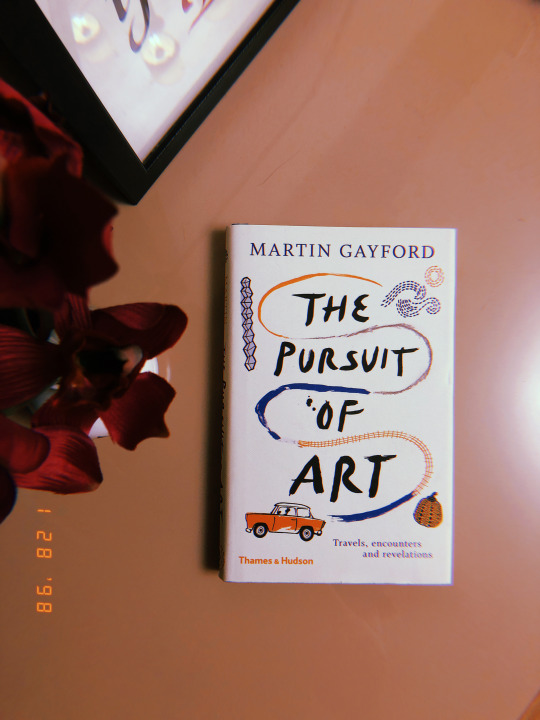
Introduction
Being There
Predecessors, Rivals, Successors
Art and Landscapes
Way Out East
Slow and Fast Looking
Chance and Necessity
INTRODUCTION
An artist’s surroundings, their personal landscape, are often connected with what they do.
A great deal of the information embedded in a work of art is not-yet at least-accessible just by looking at an image of it while sitting at home.
I hate the moment of leaving. Nor do I like the tension of catching trains on time and getting to airports. I have a fear, not of flying-when airborne I feel my fate is in the hands of highly competent professionals-but of missing planes, which on a few occasions I have managed to do. For the mobile art lover, there are also the possible pitfalls of museums, churches, and temples unexpectedly closed and work absent for restoration or on loan to distant exhibitions.
One point David made is that compulsive talkers make bad interviewers. The purpose of the exercise is not to sit down with some extraordinary person and tell them a lot of fo stuff you happen to think yourself.
He argued that for a long time people made paintings, sculptures, and artifacts without thinking of them as art. Then, a few hundred years ago in Europe, museums began to be established in which heterogeneous bits and pieces were gathered to be studied and admired for their aesthetic qualities.
0 notes
Text
Fragments from “How to Do Nothing” by Jenny Odell
Conclusion: Manifest Dismantling
Consider two things in tandem. First, people in wealthier neighborhoods almost always have more access to urban parks and to parkland, on top of the fact that such neighborhoods are often on the hills or by the water.
This is a very different situation than in West or East Oakland, where people might be working paycheck to paycheck, with no margin to spare on stewarding or even paying attention to the local watershed.
Second, consider that while seemingly evert kid in a restaurant is not watching bizarre, algorithmically determined children’s content on YouTube, Bill Gates and Steve Jobs both severely limited their children’s use of technology at home.
Without personal assistants to commandeer our phones, the rest of us keep pulling to refresh, while overworked single parents juggling work and sanity find it necessary to stick iPads in front of their kids’ faces.
Sometimes boycotting the attention economy by withholding attention is the only action we can afford to take.
For now, these old survivors sheltered here-as I did- in a space formerly dedicated to the demands of war. I wasn’t expected to encounter it today, but this may be the best illustration of what manifest dismantling has to offer to those who are willing to receive it. When we pry open the cracks in the concrete, we stand to encounter life itself-nothing less and nothing more, as if there could be more.
0 notes
Text
Quotes included in “How to Do Nothing” by Jenny Odell
Resisting the Attention Economy - Chapter 1: The Case for Nothing -
“In the global digital network, labor is transformed into small parcels of nervous energy picked up by the recombining machine...The workers are deprived of every individual consistency. Strictly speaking, the workers no longer exist. Their time exists, their time is there, permanently available to connect, to produce in exchange for a temporary salary.” - Franco “Bifo” Berardi
“Direct sensuous reality in all its more-than-human mystery, remains the sole solid touchstone for an experiential world now inundated with electronically-generated vistas and engineered pleasures; only in regular contact with the tangible ground and sky can we learn how to orient and to navigate in the multiple dimensions that now claim us.” - David Abraham
“Silence is not the absence of something but the presence of everything.” - Gordon Hempton
Resisting the Attention Economy - Chapter 2 : The Impossibility of Retreat -
“Nothing was traditional about the Garden in comparison with the most schools of the time. For instance, anyone with the zeal for learning how to live the life of refined please was welcomed. The brotherhood was open to all sexes, nationalities, and races; the wealthy and the poor sat side by side next to “barbarians” such as slaves and non-Greeks. Women who openly flaunted the fact that they were once prostitutes, assembled and joined men of all ages in the quest for Epicurean happiness.” - Richard W. Hibler
“To a country seemingly entrenched in self-interest, deaf to change and blind to its own danger, they said “Fuck it” and split. If the cities were uninhabitable and the suburbs plastic, they would still have to live somewhere. If the spirit of humane community and culture were dead in urban Amerika, they would have to create their own.” - Robert Houriet
“The explorer who will not come back or send back his ships to tell his tale is not an explorer, only an adventurer.” - Ursula K. LeGuin
Resisting the Attention Economy - Chapter 3 : Anatomy of a Refusal -
“i swear to god if i’m still making smoothies for a living 3 months from now i’m going to freakin…get up and keep going to work because i don’t have a safety net that affords me the ability to quit a fruitless, unfulfilling, stagnant job in pursuit of my dreams.“ - Talia Jane
“It’s a testament to this toxic “grind or die” atmosphere at universities that, even in the face of major illness, we put the pedal to the metal and continue to drive our health off a cliff. It’s not like this is a conscious decision to be miserable, but sometimes it feels as if taking care of our own health is a guilty pleasure ... We subliminally equate feeling burned out to being a good student.” -Tiger Sun
“It may be that refusal is the only available as a tactic to people who already possess a great deal of social capital, people whose social standing will endure without Facebook and people whose livelihoods don’t require them to constantly plugged in and reachable...These people who have what [Kathleen] Noonan (2011) calls “the power to switch off.”” - Laura Portwood-Stacer
“They fail to attack the attention economy at its roots or challenge the basic building blocks of late capitalism: market fundamentalism, deregulation, and privatization. They reinforce neoliberal ideals, privileging the on-the-move individual whose times needs to be well spent-a neatly consumerist metaphor.” - Grafton Tanner
Resisting the Attention Economy - Chapter 4 : Exercises in Attention -
"She demonstrated that even if people don’t believe racist stereotypes are true, those stereotypes, once absorbed, can influence people’s behavior without their awareness or intent.” - Jessica Nordell
“The natural dendency of attention when left to itself is to wander to ever new things; and so soon as the interest of its objects is over, so soon as nothing new is to be noticed there, it passes, in spite of our will, to something else. If we wish to keep it upon one and the same object, we must seek constantly to find out something new about the latter, especially if other powerful impressions are attracting us away.” - Hermann von Helmholtz
“Portraying the problem as one in which we just need to be more mindful our interaction with apps can be likened to saying we need to be more mindful of our behavior while interacting with the artificial intelligence algorithms that beat us at chess; equally sophisticated algorithms beat us at the attention game all the time.” - Devangi Vivrekar
“people in the majority and the minority often see two different realities” based on what they do and do not notice. For example, “[w]hite people...might only hear a racist remark, while people of color might register subtler actions, like someone scooting away slightly on the bus.” - Evelyn R. Carter
“Millions of items of the outward order are present to my senses which never properly enter into my experience. Why? Because they have no interest for me. My experience is what I agree to attend to. Only those items which I notice shape my mind-without selective interest, experience is an utter chaos.” - William James
Resisting the Attention Economy - Chapter 5 : Ecology of Strangers -
“if I don’t make a conscious decision about how to think and what to pay attention to, I’m going to be pissed and miserable every time I have to food-shop, because my natural default-setting is the certainty that situations like this are really all about me, about my hungriness and my fatigue and my desire to just get home, and it’s not going to seem, for all the world, like everybody else is just in my way, and who are all these people in my way?” - Foster Wallace
“But if you’ve really learned how to think, how to pay attention, then you will know you have other options. It will actually be within your power to experience a crowded, loud, slow, consumer-hell-type situation as not only meaningful but sacred, on fire with the same force that lit the stars-compassion, love, the sub-surface unity of all things.” - Foster Wallace
Resisting the Attention Economy - Chapter 6 : Restoring the Ground for Thought -
“Everybody says that there is no censorship on the internet, or at least only in part. But that is not true. Online censorship is applied through excess of banal content that distracts people from serious or collective issues.” Veronica Barassi, quotes an activist from Ecologistas en Acción, a confederation of Spanish ecological groups
“One thing that really surprised me about the 15M was that all the tweeting, all the social media messages and internet campaigns effectively had a unique effect: they made people come together in a single square, sit on the floor and start to talk...So technologies have made people come together but what made the movement so powerful was the physical space, the process of discussion, and reflection and the availability of the people to sit down and discuss without the pressure of time.” - Veronica Barassi, quotes a participant in the anti-austerity movement in Spain
“Facebook and Twitter are only like water coolers if there were one, giant, global water cooler for all workplaces everywhere.” - Ian Bogost
“One way to live and die well as mortal critters in the Chthulucene is to join forces to reconstitute refuges, to make possible partial and robust biological-cultural-political-technological recuperation and re-composition, which must be include mourning irreversible losses.” - Donna J. Harraway
0 notes
Text
Fragments from “How to Do Nothing” by Jenny Odell
Resisting the Attention Economy - Chapter 6 : Restoring the Ground for Thought -
Spacial and temporal context both have to do with the neighboring entities around something that help define it. Context also helps establish the order of the events. Obviously, the bits of information we’re assailed with on Twitter and Facebook feeds are missing both of these kinds of context.
Meyrowitz writes that when he was in college in the 1950s, he’d gone on an exciting three-month summer vacation, and when he got home, he was eager to share his experiences with his friends, family, and other acquaintances. Obviously, he says, he varied the stories and the telling based on the audience: his parents got the clean version, his friends for the adventurous version, and his professors got the cultured version. Meyrowitz asks us to consider what would happen to his trip narrative if, on his return, his parents had thrown him a surprise party where all of those groups were present together.
Something like a hashtag campaign can certainly be effective for raising awareness of an issue or increasing attendance at an event where no surprises are planned. But for successful targeted maneuvers, there always seem to be a strategic alternative between openness and closure.
The first behavior - ”to plan strategies for dealing with people” - has to do with plurality within the public. The second behavior that Meyrowitz identifies as being impossible in these conditions has to do with plurality within the self. He writes that with a completely generalized audience, “we would have trouble projecting a very different definition of ourselves to different people when so much other information about us was available to each of our audiences.”
“You have one identity,” Mark Zuckerberg famously said. “The days of you having different image fo our work friends or co-workers and for the other people you know are probably coming to an end pretty quickly.” He added that “having two identities for yourself is an example of a lack of integrity.” Imagine what Audre Lorde, with all her different selves, would have to say to him.
...was what Hannah Arendt called “ the space of appearance.” For Arendt, the space of appearance was the seed of democracy, and it was defined by any collection of people who speak and act meaningfully together. Although it is fragile, the space of appearance can arise anytime these conditions are met, and they have to do with proximity and scale.
It is a space where I am empowered to see and be seen, hear and be heard, by those whose investment in the space is equal to mine. Unlike the abstract public of Twitter, the space of appearance is my “ideal audience” in that it is a place where I’m addressed, understood, and challenged - thus providing a known context for what I say and what I hear in this space.
When I try to imagine a sane social network it is a space of appearance: a hybrid of mediated and in-person encounters, of hours-long walks with a friend, of phone conversations, of closed group chats, of town halls.
This social network would have no reason to keep us from “logging off.” It would respect our need for solitude as much as the fact that we are humans with bodies that exist in physical space and must still encounter each other there. It would rebuild the context we have lost.
Developing a sense of place both enables attention and requires it. That is, if we want to relearn how to care about each other, we will also have to care about place.
Parks don’t just give us the space to “do nothing”and inhabit different scales of attention. Their very existence, especially in the midst of a city or on the former sites of extraction, embodies resistance.
I find that I am looking at my phone less these days. It’s not because I went to an expensive digital detox retreat, or because I deleted any apps from my phone, or anything like that. I stopped looking at my phone because I was looking at something else, something so absorbing that I couldn’t turn away.
0 notes
Text
Fragments from “How to Do Nothing” by Jenny Odell
Resisting the Attention Economy - Chapter 5 : Ecology of Strangers -
Whether this is actually true isn’t the point. Just considering the possibility makes room for the lived realities of other people, whose depths are the same as your own. This is a marked departure from the self-centered “default setting,” whose only option is to see people as inert beings who are in the way.
For many people, myself included, public transportation is the last non-transactional space in which we are regularly thrown together with a diverse set of strangers, all of whom have different destinations for different reasons. [...] Because we share an understanding that we all need to get where we’re going, for the most part people act respectfully, literally making space for others when necessary.
When the language of advertising and personal branding enjoins you to “be yourself,” what it really means is “be more yourself,” where “yourself” is consistent and recognizable pattern of habits, desires, and drives that can be more easily advertised to and appropriated, like units of capital.
Extrapolating this into the realm of strangers, I worry that if we let our real-life interactions be corralled by our filter bubbles and branded identities, we are also running the risk of never being surprised, challenged, or changed-never seeing anything outside of ourselves, including our own privilege.
Schulman gives a firsthand account of what happened in 1980s New York, when the children of suburban families who had been part of post-WWII white flight filled vacancies left by dying, AIDS-affected queer community in places like the Lower East Side. Both in urban and psychological space, Schulman witnessed “the replacement of complex realities with simplistic ones, “ a process leading to a kind of social monoculture. Afraid of anyone who differed from the suburban archetype, the newcomers to Schulman’s neighborhood were not only uninterested in learning anything about the incredibly dynamic place they had moved to, but ignorant of their role in destroying that dynamism.
0 notes
Quote
If I sit and daydream, the images rush by like a succession of colored slides.
Francis Bacon (1909 – 1992, Irish)
813 notes
·
View notes



